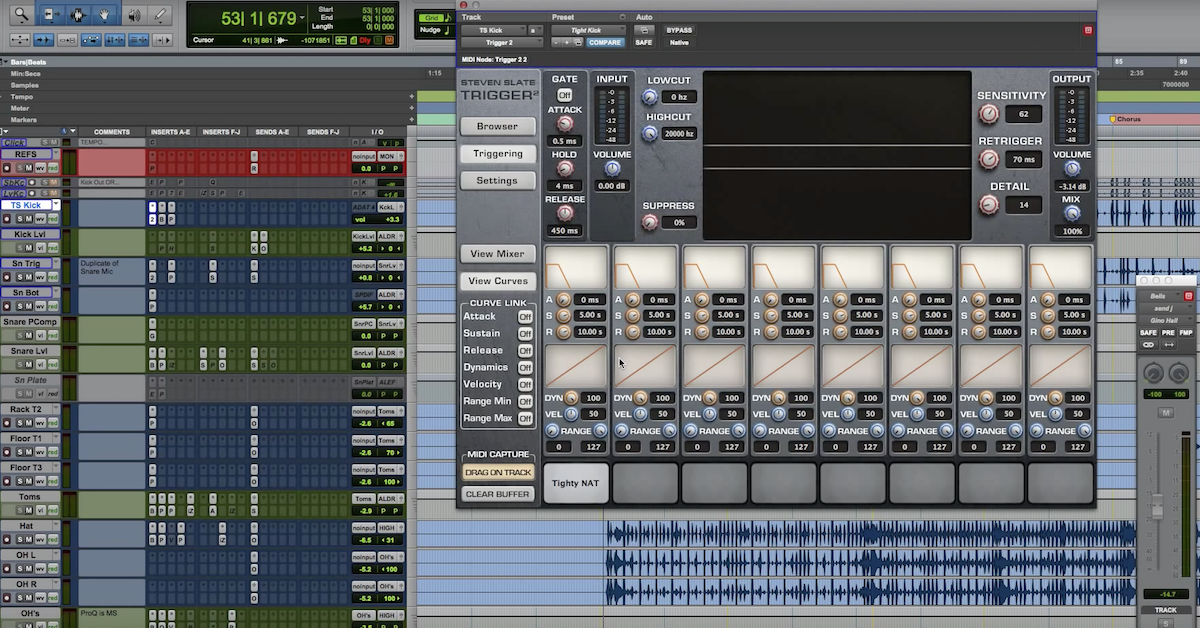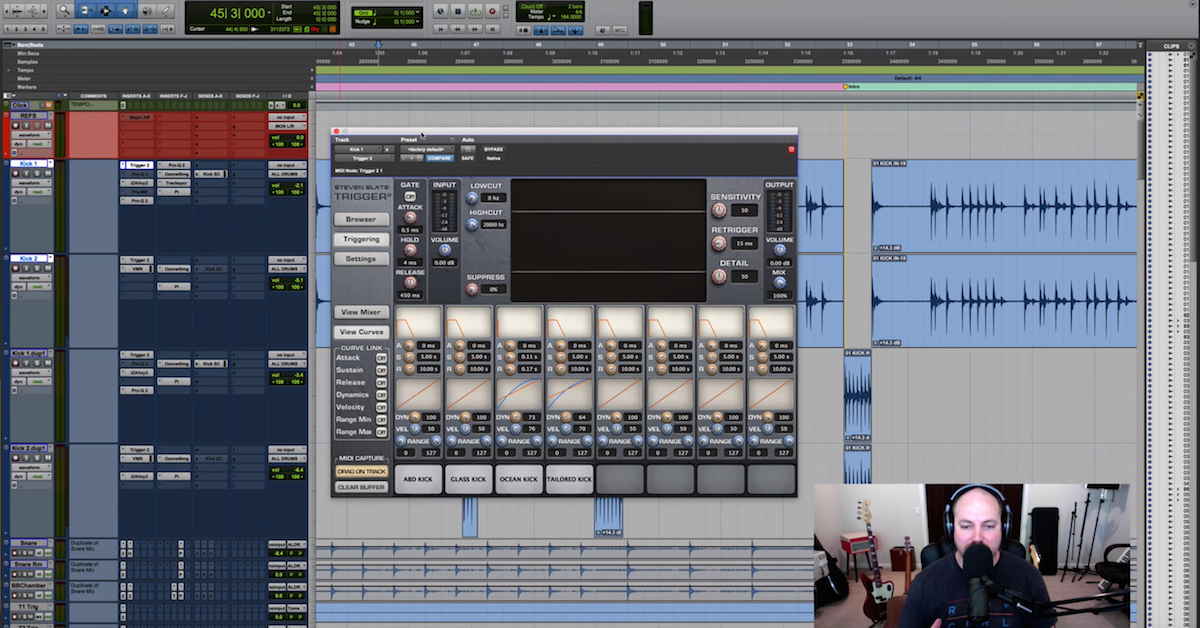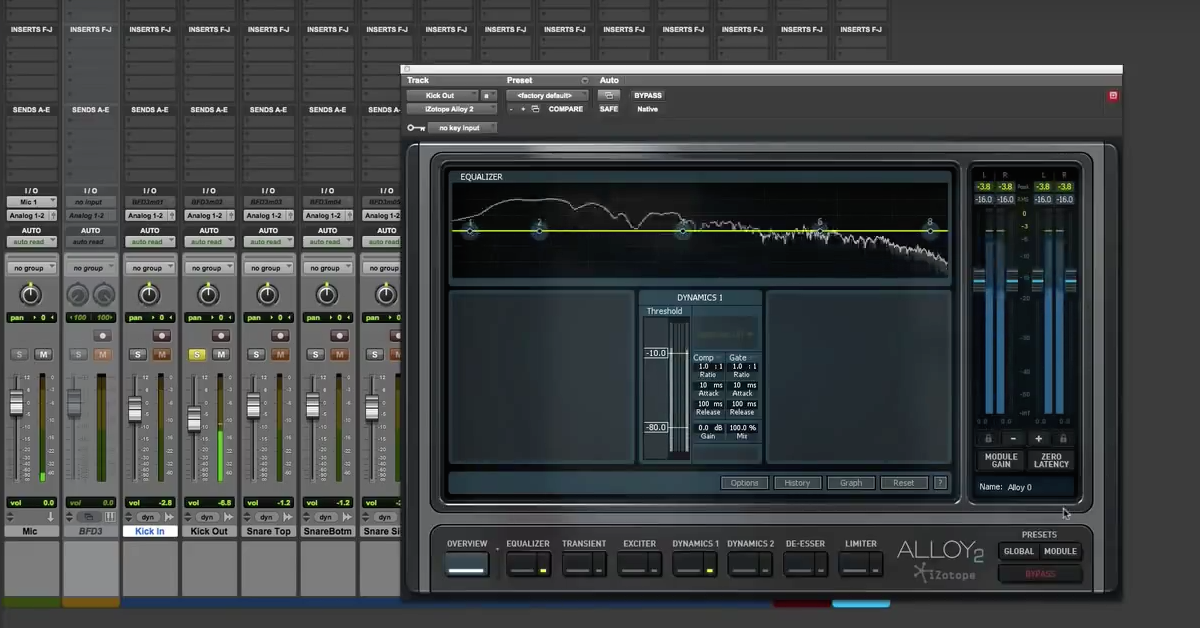Live Drums vs Sample Replacing in a Mix
Today I want to talk about drum replacement. Live drums versus triggering samples, or even the argument against enhancing or blending samples to better the live recording.
Now, this is a question I get all of the time in my membership site. It’s called The Mix Academy. You can go check that out at themixacademy.com, but members are always asking me, “hey, why do you just rush to and go to replacing drums?”
It’s really not as simple as just one answer, so I’m going to elaborate and give several reasons why I like to replace drums. So number one, drums just don’t come to me sounding very good. I don’t know about you, but the stuff that I’m mixing requires a lot of surgery and a lot of work to try to get them to sound good.
So that’s kind of the first reason. Back in the day, you’ve got producers and engineers in the room with the drummer moving the kit around, swapping kicks, snares, toms, between the songs, what fits the song the best, etcetera. That just doesn’t happen that much anymore.
The equipment, we’re not dealing with the best of microphones and preamps in many situations, and so the actual engineering of drums pretty much sucks nowadays, in general. From my experience. Let me not speak for everybody.
So that’s number one. Number two, I do this as a business. This is my way to provide for my family, and if I can go from A-Z faster, that’s going to help make me money. So whenever I go and I pull open a kick drum from the good people at That Sound, my favorite drum sample company, and I pull open a snare, that’s going to get me from A to Z a million times faster than messing around with the individual kick and snare and all of that good stuff.
Don’t get me wrong, I still do auto-align and phase enhancement, and I want to get the drums to sound the best they can the way they were given to me, and I’m always listening first and evaluating the tones, but again, if I can go from A to Z fast, that’s going to help get the results that I’m looking for quicker, which is going to get the project done faster, which is going to get the payment coming in.
So, I’m all for the soul and the emotion of music, and the arts. That’s all extremely important, but we also have to feed our families, right?
So another reason. Isolation. Back when I was young and dumb, I was at Azimuth Recording Studios in Indianapolis, Indiana – give a shout out to my man, Ryan Atkins***, Travis Moore***, those guys up there. Incredible people. Go check them out if they’re in the area.
Ryan – it was my first real experience in a studio, and he had some incredible microphones, but even more important, he had some great techniques for recording drums. From throwing plywood down on the floor, to isolating the kick with a trash can and then a blanket, etc.
I could go on for days. Actually, one time, this is kind of a cool story, I took a mic, threw it over the drummers head, routed that into the booth where we had my pedal board – my guitar rig with all kinds of stuff, and then we sent that to an amp and mic’d up the amp with like, two or three mics. We used to stick mics up in the AC unit. We’d have the grille off and stick them up there.
Just all kinds of crazy stuff. A little rabbit trail, but Ryan’s the man is what I’m trying to say, and he would isolate the kick, and he would treat that, and then he would EQ the kick in, the kick out… We’d get kind of the kick sub tunnel thing going on, and that was awesome.
The best part of that technique was the isolation that it gives us to get in and boost click in the kick and not get a ton of overhead, or hat/ride, etc. The metal coming through and just creating a trashy sound.
That’s a lost art. Not many guys out there are killing it with their drum recordings, and for the most part, I’m dealing with bands who are recording themselves nowadays.
So kind of a messy subject, but for you naysayers out there, there’s more than just throwing on samples. There’s a lot of thought that goes into that. If I’m sent, again, a producer, engineer, or band who works their butt off and they swap out kick sounds, and they’re tuning the drums – that’s another argument, tuning. Sometimes, it could be really, really well recorded, but the tuning is just terrible, so it’s easier to go to a sample.
But for the naysayers, there’s more to it than just throwing on samples and rocking.
Alright, so what I want to do now is give you a quick before and after, and show you the benefits of the samples in this case. I’m using samples in this song from hardcoremixing.com. We’ve got the Ocean Kick, and then I’m blending one of his snares with samples from That Sound. The That Sound stuff gave me a way more natural vibe, so by blending the two together, I get the modern rock sound, and I get the love and the natural sound from the guys at That Sound.
So a little cheesy way to describe that, but let’s hit play. Here’s without the samples. All of the processing. That keyboard shortcut is Option+Control+Shift on Mac, and then clicking on one plug-in instance. You can see all of them in one shot, so you can get a nice A/B of what you’ve done.
Here are the drums as they were sent in.
[drums play]
Okay, this is slightly an unfair comparison, because the toms are down the middle. They’re all panned so you get all of that cymbal bleed down the middle, but for quick comparison, you can just picture the toms being side to side.
So one more time, here’s the dry recordings.
[drums play]
Okay. Those have been auto-aligned, so the phase relationship should be fairly good in that.
Now I’m going to turn on all of the plug-ins and the triggers, and let’s hear for this song how much of an improvement this is.
[drums play]
Okay, so now in context, it might be a little bit difficult to do this fairly, but here’s the song with the original drums.
[song plays]
Okay, again. The bleed, we could do things. We could gate, we could go in and delete all of that extra noise… There’s things we could do to clean these up. These are not by any means the worst sounding drums I’ve ever heard.
Granted, the toms are killing us with that ring out in the middle, but let’s go ahead and put them back in, and you can hear the finished drum mix.
[song plays]
Okay. The most important thing about this particular tutorial was the first conversation that we had. This is kind of a janky A/B comparison, but the only other thing that I wanted to say was about bands budgets. Not every band has a budget to go into a big studio, swap out kicks, etcetera.
I would say that’s one of the most important things to do in a big studio, if not the most important, so consider that, but for producers, bands, here’s the last tip in this video.
Pick your own samples. Buy your own drum samples. Learn the art of blending, enhancing, or triggering drums, and pick your sound. Don’t just relinquish that responsibility to the mixing engineer. I love doing it. Like, I’m a guitar player, so for me, guitarists are frustrated drummers. I’m a frustrated drummer, I suck on the drums, but I love to make drums sound incredible.
But if you’re a band or a producer, and you’re leaving that responsibility to the mixer, you’re going to be at the mercy of whatever his libraries are, whatever he hears in his head.
So I would recommend that you go to thatsound.com, pick up some drum samples, go to the Steven Slate stuff, pickup his drum samples. Hardcoremixing.com. Tons of great companies out there with incredible sounding drums. Produce your own drum sounds, and then let the mixer take it from there.
So there’s my two cents on live versus samples. Blending samples is a great way also to accomplish a great drum sound. In this particular case, I loved the cleanliness of using just the samples.
So I hope you dig that, don’t forget to check out mixingmodernrock.com, davidglennrecording.com, The Pro Audio Files, and we will see you in many more to come.





